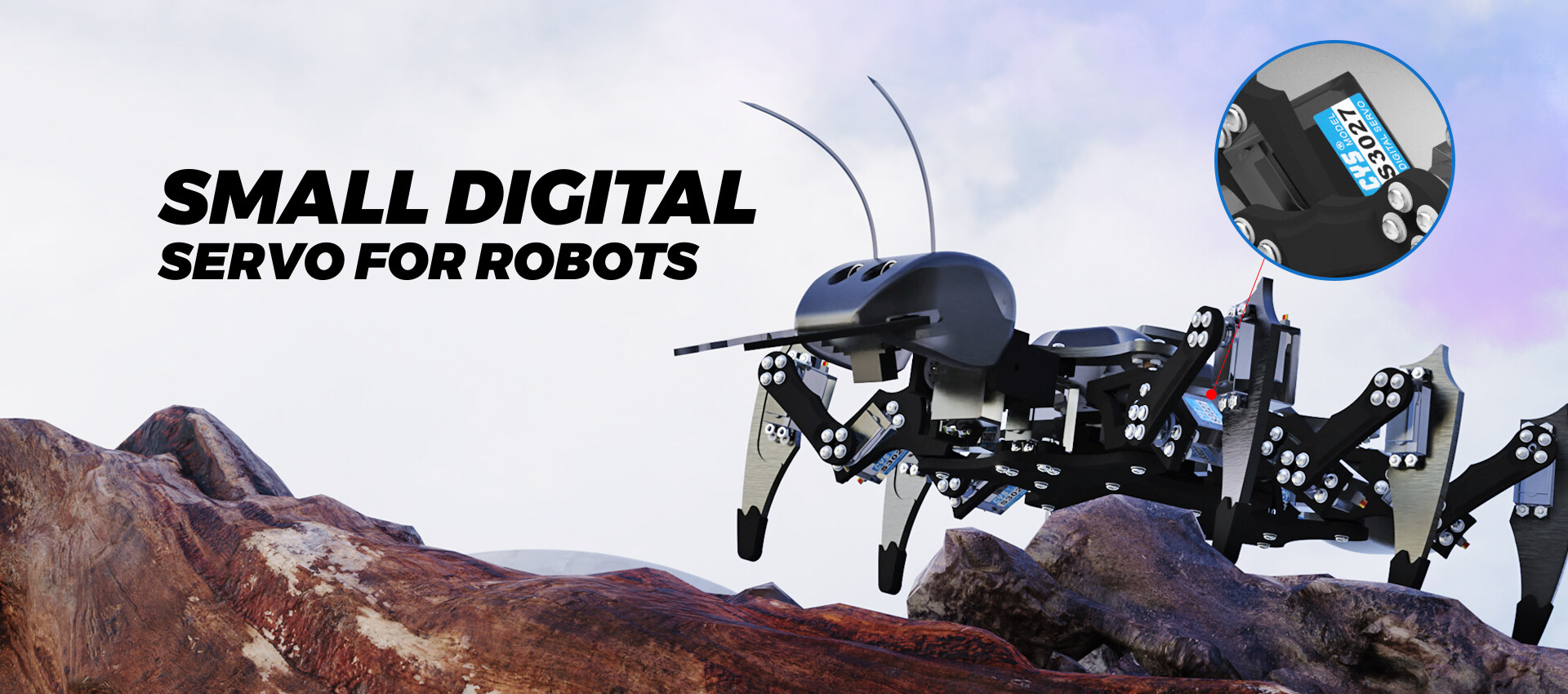Email cannot be empty
Password cannot be empty
Email format error
Email cannot be empty
Email already exists
6-20 characters(letters plus numbers only)
The password is inconsistent
Email format error
Email cannot be empty
Email does not exist
6-20 characters(letters plus numbers only)
The password is inconsistent


Coreless Servo vs Brushless Servo: Which One is Right for Your Application?
When selecting servos for robotic projects, industrial automation, or hobbyist endeavors, two of the most commonly discussed types are coreless servo and brushless servo. While both have their own set of advantages, understanding their differences can help you make a more informed choice. In this blog post, we’ll dive deep into the coreless servo vs brushless servo debate, exploring key features, performance, durability, and typical applications.
What is a Coreless Servo?
A coreless servo is a type of electric motor that uses a coreless design in the rotor. Unlike traditional motors that use an iron core in the rotor, a coreless motor relies on a coil winding that floats in space, creating a lighter, more efficient system. This design offers several key benefits, including:
- Reduced Inertia: The coreless rotor has significantly less inertia compared to conventional motors. This means that the motor can respond to commands more quickly and with greater precision.
- Higher Efficiency: With less friction and fewer parts that need to move, coreless servos are often more energy-efficient, translating to longer battery life in mobile devices and robots.
- Smooth Operation: Because there are fewer moving parts inside the motor, coreless servos can achieve smoother and quieter operation, which is especially valuable in applications requiring minimal noise or vibration.
What is a Brushless Servo?
A brushless servo is another advanced type of motor that differs significantly from traditional brushed motors. The primary difference is that a brushless motor does not use brushes to transfer electrical power to the rotor. Instead, it uses a controller to manage the flow of power, which results in several distinct advantages:
- Improved Durability: Without brushes that wear out over time, brushless motors last much longer than their brushed counterparts. This is one of the key reasons why brushless motors are often preferred in high-performance applications.
- Higher Efficiency: Brushless servos can convert electrical energy into mechanical power more efficiently than brushed servos, resulting in reduced heat generation and more consistent performance.
- Higher Torque and Speed: Brushless motors often provide higher torque and speed than coreless motors, making them ideal for applications that require a lot of power and precision.
Coreless Servo vs Brushless Servo: Key Differences
Understanding the differences between coreless servo and brushless servo is essential for selecting the right motor for your needs. Here’s a comparison of the two:
| Feature | Coreless Servo | Brushless Servo |
|---|---|---|
| Design | Uses a coreless rotor design for less friction and inertia. | Uses a brushless rotor design with a controller to manage power. |
| Efficiency | Generally more energy-efficient with less internal friction. | Extremely efficient, especially at higher speeds and torques. |
| Durability | Good durability, but can wear down with heavy use. | Superior durability due to lack of brushes, ideal for long-term use. |
| Speed & Torque | Suitable for low to medium torque and speed applications. | Provides higher torque and speed, suitable for high-performance tasks. |
| Noise & Vibration | Quieter operation with minimal vibration. | Can generate more noise and vibration but offers more power. |
| Maintenance | Requires periodic maintenance for long-term use. | Minimal maintenance needed due to lack of brushes. |
Performance and Efficiency: Coreless vs Brushless
Both coreless servos and brushless servos are designed for optimal performance, but they excel in different areas. When comparing coreless servo vs brushless servo in terms of efficiency, the brushless design generally offers superior performance, especially when high speeds and torque are required. Brushless servos are capable of delivering a greater amount of power without generating as much heat, making them ideal for industrial and high-performance applications.
However, coreless servos still hold their ground when it comes to energy efficiency in low to medium load applications. Their lightweight design means that they require less power to operate, making them ideal for smaller projects or devices where battery life is crucial.
Applications for Coreless Servos
Coreless servos are widely used in a variety of applications, especially where space, weight, and energy efficiency are important. Some of the most common uses include:
- Robotics: Lightweight and precise, coreless servos are a perfect fit for robots that require quick and accurate movement.
- Hobbyist Projects: Many model enthusiasts use coreless servos in remote-controlled cars, airplanes, and drones due to their compact size and reliable performance.
- Consumer Electronics: Devices like cameras and actuators often use coreless servos for smooth and accurate movements.
- High-End RC Applications: The full aluminum case coreless servo CYS-S2915 is a prime example of how these servos are utilized in hobbyist high-performance applications, offering smooth control and precision.
Applications for Brushless Servos
On the other hand, brushless servos are commonly found in industries where power, torque, and long-lasting performance are crucial. Key applications include:
- Industrial Automation: Brushless servos are ideal for CNC machines, conveyor systems, and robotic arms, where high torque and reliability are needed.
- Electric Vehicles: Brushless motors are commonly used in electric vehicles, both for propulsion and for auxiliary systems due to their high efficiency and durability.
- Aerospace: Brushless servos are used in various aerospace applications, including in-flight control systems and drone motors, because of their power density and reliability.
- Electric Skateboards and Bikes: These systems often use brushless motors due to their ability to handle high speeds and deliver consistent performance.
Cost Comparison: Coreless vs Brushless
When comparing coreless servo vs brushless servo, cost is often a deciding factor for many consumers. Generally, brushless servos tend to be more expensive due to their advanced technology, durability, and higher power output. They are considered a premium choice for high-performance applications.
On the other hand, coreless servos offer a more affordable solution for less demanding applications. They provide excellent value in situations where efficiency, compactness, and quiet operation are important, but extreme power and durability are not necessary.
Which One Should You Choose?
Choosing between a coreless servo and a brushless servo depends entirely on your specific needs and the application at hand. Consider the following factors when making your decision:
- Power Requirements: If you need higher torque and speed, a brushless servo is likely the better option.
- Durability: For long-lasting performance with minimal maintenance, a brushless motor will typically outperform a coreless one.
- Efficiency and Size: If you’re working on a smaller project or one that requires low power consumption, a coreless servo may be ideal.
- Cost: For budget-conscious applications, coreless servos are more affordable and still offer reliable performance.

Conclusion: Coreless Servo vs Brushless Servo
Both coreless servos and brushless servos have their place in the world of motion control. Whether you choose one over the other depends on factors like performance requirements, budget, and application specifics. Coreless servos, such as the full aluminum case coreless servo CYS-S2915, are excellent for lightweight, efficient, and precise applications. In contrast, brushless servos excel in high-power, high-speed, and heavy-duty environments where durability and longevity are critical.
By understanding the core differences between coreless servo vs brushless servo, you can make the right choice for your next project, ensuring that you get the best performance for your needs.
